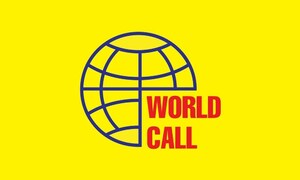Attock Petroleum Limited (PSX: APL) was Incorporated in 1998 an oil marketing company and is part of the Attock Oil Group of Companies. It has a has a strong retail network with over 700 retail outlets nationwide and its product portfolio consists of lubricants, commercial and industrial fuels; and it markets and supplies fuels to manufacturing industry, armed forces, power producers, government/semi-government entities, FMCG companies, developmental sector, and agricultural customers. APL is part of the vertically integrated Attock Oil Group. Its sponsor, Pharaon Investment Group Limited Holding s.a.l holds the largest shareholding at 34 percent, whereas other key shareholders include Attock Refinery, Pakistan Oilfields Limited, and Attock Oil Company as shown in the illustration.
APL past financial highlights
Continuing the volumetric growth, petroleum products and retail volumes sold by the OMCs caused higher sales revenues due to higher oil prices in FY16. However, Attock Petroleum Limited’s overall volumes were adversely affected by the phasing out of furnace oil. As a result, APL lost market share in attempt to reduce exposure in furnace oil due to unattractive margins. However, revenue growth for APL was strong in FY17 due to growth in volumes, which translated into a heavy bottomline. Overall, APL’s earnings were up by 38 percent year-on-year in FY17.

Revenues continued to grow in FY18 as petroleum prices remained high and volumes grew as well. Increase in sales volume and inventory gains due to rising price trend of petroleum products during the year resulted in higher gross margins. However, APL’s profits grew meagerly by seven percent year-on-year due to reversal of provision of other charges and higher exchange losses due significant currency depreciation during the year.
FY19 volumetric growth slowed down due to falling crude oil prices and domestic currency nosediving. Moreover, the effects of monetary and fiscal tightening adversely affected the OMC sector in FY19. Where the falling crude oil prices resulted in significant inventory losses for the OMCs, the depreciating rupee brought in large exchange losses.

APL’s topline grew by around 26 percent year-on-year, which was entirely due to higher petroleum product prices, because voluemtric growth remained subdued in FY19. APL’s volumes declined by 11 percent year-on-year led by furnace oil and high speed diesel sales while earnings were down by 30 percent.
FY20 was a difficult year for many sectors including the OMCs largely due to demand destruction brought by the COVID pandemic. APL’s earnings plummeted to only Rs1 billion. Weakness in earnings was due to inventory losses from lower prices of petroleum product in the country versus international prices, along with decline in volumes. During FY20, APL’s volumes sold registered a decline of around 11 percent year-on-year, which was highest for diesel followed by petrol and then furnace oil.

Apart from the weakness in the topline and higher inventory losses, jump in finance cost amid high interest rates, relatively lower other income, decline in profits from associated further added to the bottomline decline.
FY21 was a recovery year for the economy. After battering earnings to levels not seen in at least a decade, APL’s bottomline jumped by 4.9 times in FY21 where the 4QFY21 earnings surged by more than nine times.
Though the overall topline growth remained subdued with a decline of 6 percent year-on-year, revenues for APL grew by 52 percent year-on-year in 4QFY21. The primary reason for growth in revenues was 20 percent increase in volumes in 4QFY21 led by furnace oil recovery in the fuel mix. At the same time, the oil price recovery after the international price crash in 2020 supported the revenue growth for the quarter.
APL’s gross margins grew astoundingly due to significant inventory gains against heavy inventory losses in the corresponding period. This was due to increase in oil prices as well as due to modification in the domestic petroleum pricing format to fortnightly basis that reduced the volatility from the lag. The operating and net profits got a further lift from net impairment reversals on financial assets in FY21 as well as a decline in finance cost.
FY22 and beyond
Volumes started churning growth for APL again and 1HFY22 witnessed a 20 percent rise in sale of petroleum products by APL. The company announced over three times increase in bottomline for the first six months of FY22. The first half earnings were also supported massively by over six times increase in 2QFY22 profits.

The surge in earnings came from growth in volumes, inventory gains and product margins amid rising petroleum product prices in the country. APL’s topline grew by 72 percent year-on0year in 1HFY22. . The rise in revenue was due to rise in petroleum product prices as well as increase in volumes sold by the oil marketing company. APL sales volume of HSD increased by 42 percent against industry sales volume of 16% and sales volume of motor gasoline increased by 24 percent against industry sales volume of 9 percent.

APL sales volume of Bitumen increased by 34 percent against industry sales volume of 8% due to increase in spending on infrastructural development by government and APL’s market share of Bitumen increased significantly, which helped the company increase its overall market share from 9.5 percent to over 10 percent.
1HFY22 gross margins were significantly up due to the gross margins were up from inventory gains. APL’s other operating expenses saw a jump in 1HFY22, which adversely affected the bottomline.

However, APL witnessed growth in finance income and finance cost in 2QFY22 due to higher policy rates and higher receivables.
The last quarter of FY21 started the recovery in volumes for the OMC sector including APL with a rebound in economic activity including car sales, industrial activity, and agriculture output, along with continued restrictions on cross-border smuggling.

The trend has continued as volumes have continued to grow despite rising petroleum prices.























Comments
Comments are closed.